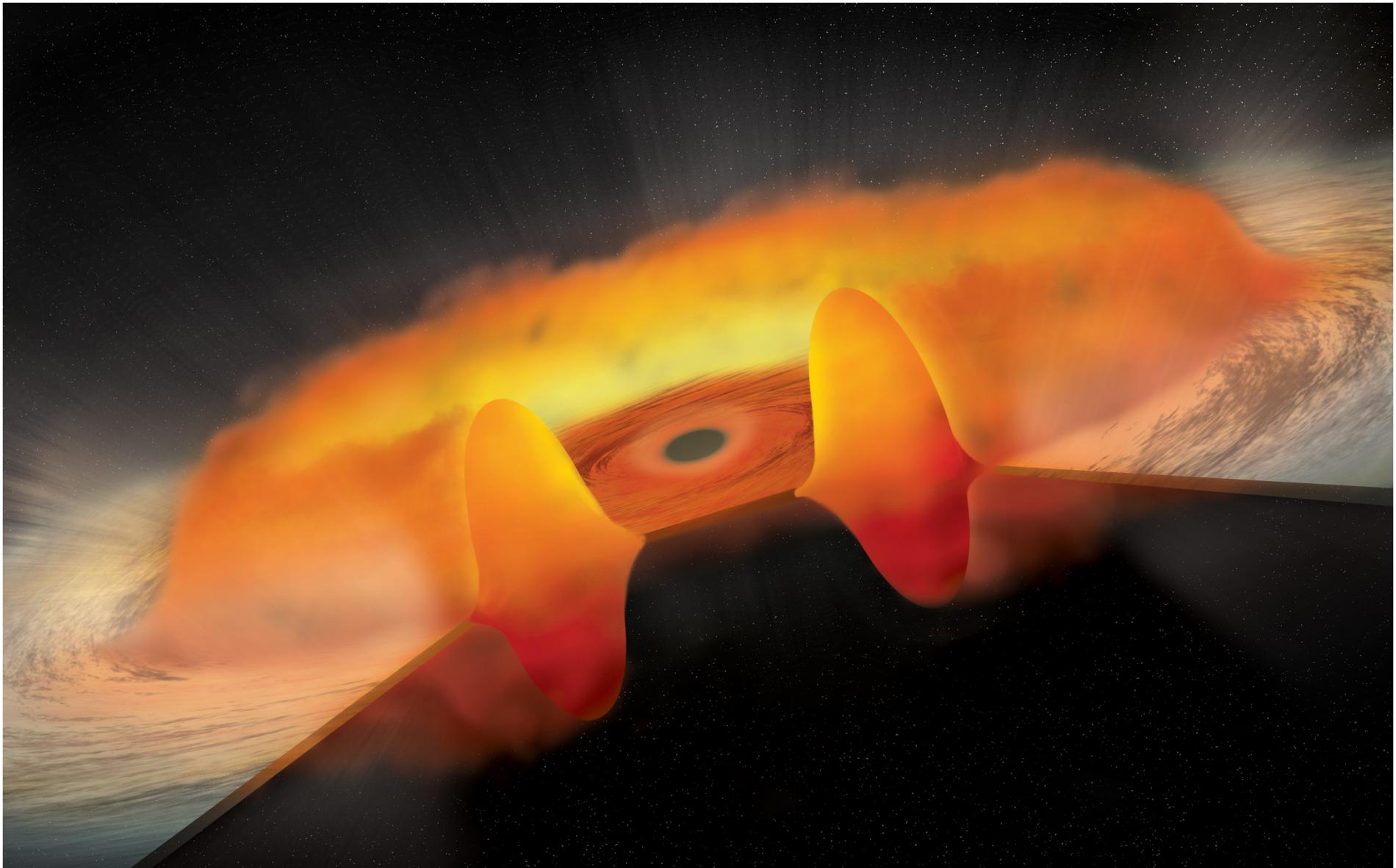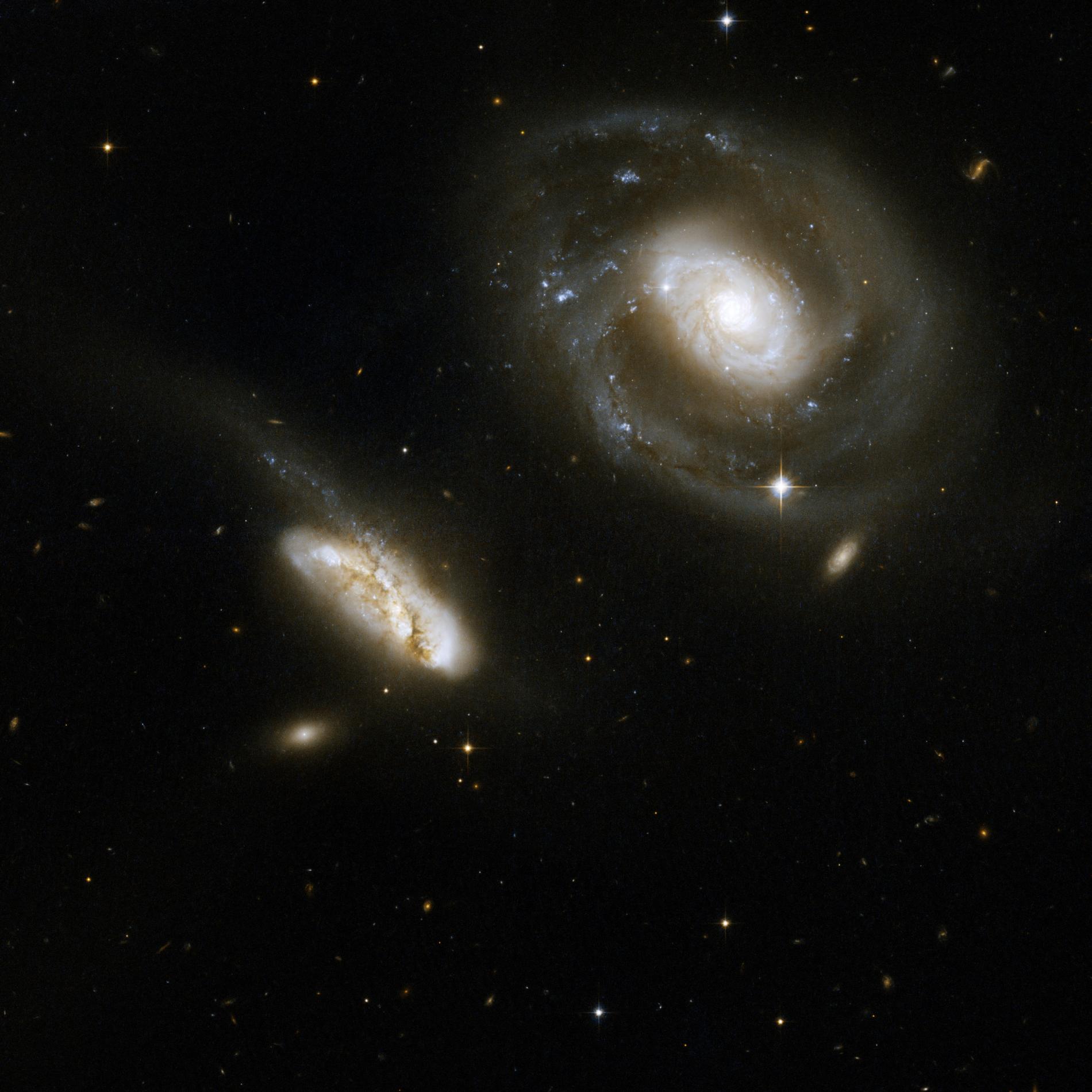MEGARA instrument enters the heart of the active galaxy NGC 7469
A study led by the IAA-CSIC has revealed the existence of two rotating gas discs in the vicinity of the galaxy's supermassive black hole, as well as a third component that points to turbulent movements. MEGARA, a 3D spectrograph operating at the Gran Telescopio Canarias (GTC), demonstrates its ability to study the motion of gas and stars in galaxies in unprecedented detail
Active galaxy nuclei are among the most energetic objects in the universe, and can continuously emit more than a hundred times the energy of all the stars in a galaxy like ours. Their brightness is attributed to the existence of a supermassive black hole surrounded by a disk of matter that feeds it, but the phenomenon of nuclear activity still raises many questions. The MEGARA instrument, designed to solve hitherto unresolved scientific problems, has just revealed new structures in the regions near the active nuclei of NGC 7469.
NGC 7469, located some 200 million light years away -relatively close in astronomical scales- shows a high rate of star formation, which is attributed to past interactions with its companion galaxy. It is a seyfert galaxy, a type of active galaxy that shows a very bright nucleus, the product of the fall of material towards the supermassive black hole. The black hole has an estimated mass of some twelve million suns.

For a black hole to be active there must be material to feed it and an efficient mechanism to transport the material to the nucleus. Among these mechanisms are the discs, flattened structures that revolve around the black hole and whose material spirals towards the center; the bars, elongated structures that extend on both sides of the nucleus and channel the gas from the arms of the spiral galaxies towards the nucleus; or the winds, very fast flows of gas and dust capable of moving large masses of material.
"Thanks to MEGARA we have been able to study the central region of NGC7469 with an unprecedented resolution. We found that the ionized gas traces three components, two corresponding to discs that co-rotate in the same plane, one thinner than the other, and another one that does not show rotation and is probably associated with the presence of winds", says Sara Cazzoli, researcher at the Institute of Astrophysics of Andalusia (IAA-CSIC) who leads the work.
"One of the great questions regarding active galaxies lies in the very origin of the activity. We know that almost all galaxies with masses similar to that of the Milky Way or larger have supermassive black holes in their nuclei, but some are dormant, such as SgrA*, the central black hole of our galaxy" -says Isabel Márquez, a researcher at the IAA-CSIC who participates in the work-. Studies with such high kinematic resolution are necessary to understand the phenomena related to the feeding and feedback of active galaxies, as well as the role played by the different components".
Knowing what happens in the central regions of active galaxies, or how the gas moves in the different components, requires a state-of-the-art technological capacity. The MEGARA instrument, designed by a consortium led by the Universidad Complutense de Madrid, in which the Institute of Astrophysics of Andalusia (IAA-CSIC) participated, uses IFS technology - an acronym for "integral field spectroscopy" - which makes it possible to take around a thousand spectra per galaxy and obtain a complete 3D panorama of them.
"Due to the brightness of the nuclear regions of active galaxies, smaller telescopes were normally used for their study -says Armando Gil de Paz, a researcher at the Complutense University of Madrid who participates in the work-. However, much of the information is found in clouds of gas that differ from the rest: they move at high speeds and, due to these movements, have their weak emission located at frequencies different from that produced by most of the gas in galaxies. It is what is known as the wings. Observing these wings requires the use of large telescopes and highly efficient instruments such as the Gran Telescopio Canarias and MEGARA, respectively".

S. Cazzoli et al. "NGC7469 as seen by MEGARA: new results from high-resolution IFU spectroscopy". Monthly Notices of the Astronomical Society, DOI: https://doi.org/10.1093/mnras/staa409
Instituto de Astrofísica de Andalucía (IAA-CSIC)
Unidad de Divulgación y Comunicación
Silbia López de Lacalle - sll[arroba]iaa.es - 958230676
https://www.iaa.csic.es
https://divulgacion.iaa.csic.es
